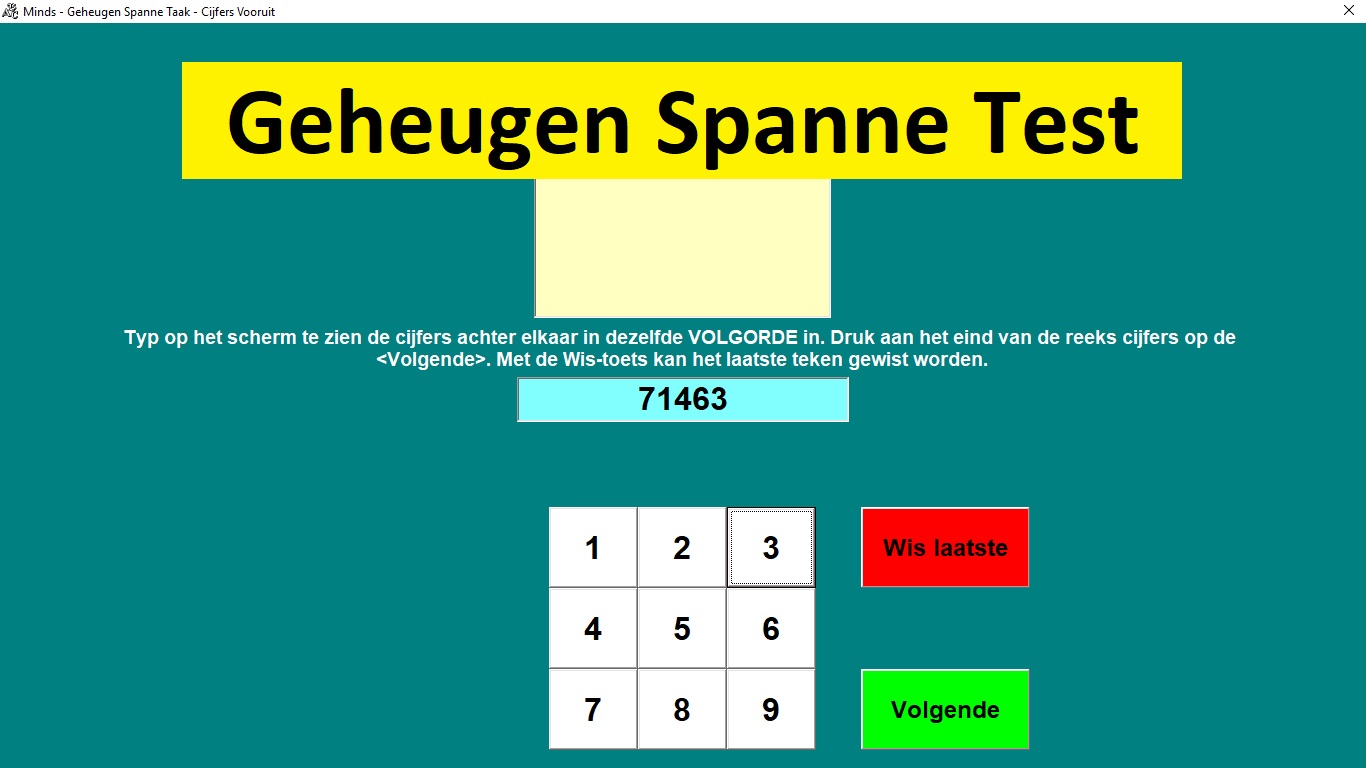

Not too surprisingly, our society has changed as to its ability to process visually and auditorially. How well we process what we see and hear is largely a reflection of opportunity. WHAT IS NORMAL?īefore looking at “normal” function, let us begin by understanding what “normal” means. Many of our problems associated with expectations and teaching are related to our lack of knowledge of these two very basic functions of processing what there is to see and hear. Short-term memory represents the actual quantity of information the child takes in through his or her eyes and ears. WHAT DO AUDITORY AND VISUAL DIGIT SPANS MEAN?Īuditory and visual digit spans provide us with knowledge of the child’s auditory and visual short-term memory.

The visual digit span is determined the same way. The child’s auditory digit span is the quantity they were able to repeat correctly, and in proper order. Proceed as with the auditory digits, offering reinforcement and 2 attempts at each quantity. When the child is ready, hold up the first card for 3 seconds, put it down, and ask the child what numbers they saw. They are to look at the numbers, and when you put the card down, have them tell you what numbers they saw. You are going to show the child a card with numbers on it. When the materials are prepared, tell the child that you are going to play a game.

Proceed by preparing 2 cards with 3 numerals, 2 with 4 numerals, etc. Clearly, with a black felt marker, prepare 2 cards with 2 numbers each numeral should be ½ inch high and separated by ½ inch. With 3×5 inch index cards, prepare your evaluation materials. This evaluation should not be done with a child unless they can easily identify their numbers from 0-9. Testing the visual digit span duplicates the auditory process, with the exception that you show the child the numerals, rather than say the numbers. After each of the child’s responses, verbally reinforce them: (Example, “That’s great!” “Super”, “Terrific, you’re really good at this” etc.) VISUAL SHORT TERM MEMORY Always give the child a second set of numbers when they miss the first sequence, and stop when they have missed 2 sequences of the same quantity. If the child succeeds in repeating the 2 digits, proceed to 3, 4, 5, etc. If the child is unable to repeat this second sequence, stop. If the child was unable to repeat the sequence, give him a second sequence of digits utilizing different numbers. Have the child attempt to repeat the sequence.

To test the auditory digit span, the parent should slowly (1 digit per second) say number sequences beginning with 2 digits (Example, 4 – 1 sec.
#DIGIT SPAN MEMORY TEST HOW TO#
HOW TO EVALUATE AUDITORY AND VISUAL SHORT-TERM MEMORY AUDITORY SHORT TERM MEMORY The drastic limitation of short term memory compared to the vast capacity of long term memory has led to a ”bottleneck” model of human memory, where any information must pass the narrow working memory before it is either forgotten or stored in long term memory.By Robert J. In contemporary models of the working memory, there is also visuo-spatial sketch pad which handles non-symbolic information such as images and spatial information. This task is relying heavily on an articulatory control process which is used for verbal rehearsal which was traditionally considered as the short term memory. If the reproduction should be in reverse order, the executive control function is more prominent since the items must be re-ordered. The length of the last correctly reproduced sequence is the estimate of the memory span. The test is aborted when the subject failed to reproduce two consecutive sequences.
#DIGIT SPAN MEMORY TEST SERIES#
The length of the series is increased with each correct reproduction. The digit memory span test measure how many digits a subject can reproduce from a series of digits presented to them. The limitation of working memory to hold discrete units to an amount of 7 ± 2 items is called memory span and is a well proven finding in the field of cognitive research.


 0 kommentar(er)
0 kommentar(er)
